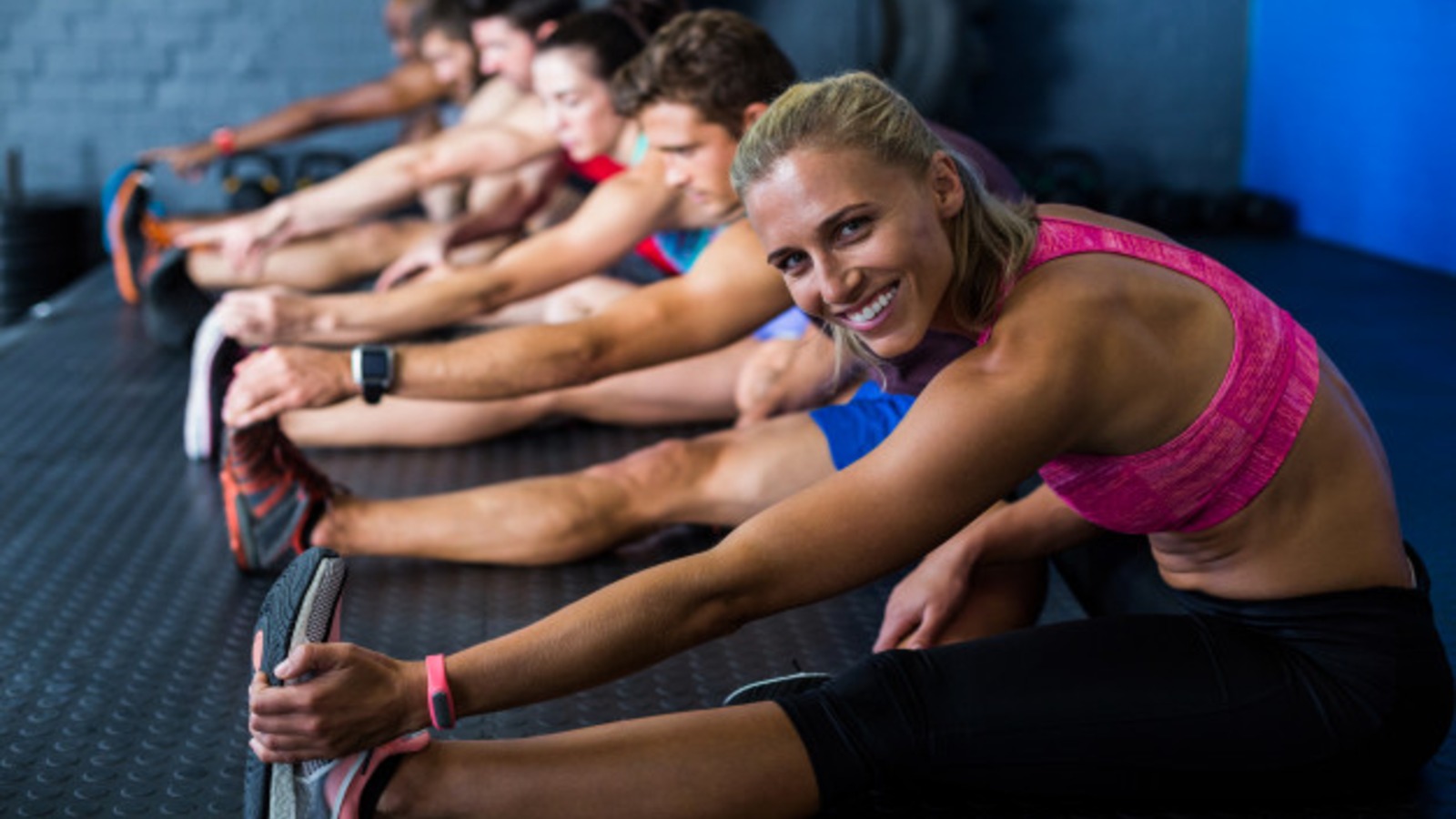
This is Claire (and her 10 am Zoomba class) ...
Claire works as an independent fitness professional running class-based exercise sessions in a variety of public locations such as community halls and the local park.
In your opinion, what are the main reasons that clients may be apprehensive about commencing a fitness program?
Everyone is different, however, the main obstacles that I encounter are a lack of awareness of the need to change their behaviour, a lack of social support, poor body image, and sometimes their beliefs and values.
For example, many clients are not aware that their body-weight is in the overweight or obese category of the BMI scale. I know this scale is not necessarily the best indicator, but it does provide a good starting point. Many people think they are a little overweight but don't really see it as a problem and are not necessarily ready or willing to make the necessary commitment to change. I see this type of thinking with other behaviour characteristics like smoking, clients are certainly aware of the health implications but they think they have plenty of time to change their habit.
Social support, or a lack of it, can present quite a few motivational road-blocks. For example, clients may have young children to care for and are unable to find anyone to baby-sit, or they may feel nervous about joining a fitness class by themselves. Some people are very lonely but lack the confidence to participate in social activities like group fitness because they don't feel like they belong or they fear they won't be able to 'keep-up' with the more experienced participants.
Poor body image is a huge factor in preventing people from participating in fitness activities. I will admit that sometimes my classes look like they are populated by a bunch of amazingly fit and healthy looking people who know exactly what they are doing and are confident. This can be a bit intimidating to someone who looks or feels different. Therefore, I always make newcomers feel welcome and where possible try to pair them up with another client who is at a similar stage. I find that once they get started most clients find out that everyone is supportive, friendly, and willing to provide assistance where necessary.
Occasionally I will encounter some clients who have strict beliefs and values which impact on their ability to participate in fitness activities. For example, in my neighbourhood, there is a large migrant population and I approached a local community centre and asked to put up flyers for my classes. This was initially met with resistance because they knew my classes were mixed-sex, and they said that many of their members, especially the women, would not be comfortable exercising alongside men. I had to make some changes and schedule some specific women-only classes, this was met with very positive results and now I have two full classes sourced entirely from the one community centre.
What tactics do you use to try and increase exercise participation and adherence?
One of my main methods is to build a positive rapport with my clients. I like to think I am a friendly, approachable, and positive individual and I think this really helps. I take the time to get to know each of my clients on a personal level, asking them about their interests, work, and family, and I try to remember all the key details. Through these conversations, I can usually work out what their personalities are like and what sort of motivation they are likely to respond to. For example, some clients are quite shy and reserved and are happy with low-key motivational rewards like setting goals and achieving the results and discreet praise and encouragement. Others are more out-going and crave the public recognition of a prize or announcement to the group. Both characteristic types are fine, I just need to ensure I don't mix them up and unintentionally embarrass or snub anyone.
How do you help your clients to establish fitness goals and then achieve them?
I'm a bit advocate of the SMART goal system, this stands for Specific, Measurable, Attainable, Relevant, and Time-based. I find that if we break down a broad goal into these components it really helps to establish success. The SMART system is quite easy to implement I just ensure the wording is clear and well-defined, that there are some statistics recorded to measure against, that there is a series of small yet challenging benchmarks, ascertain their level of commitment to the goal, and assign a realistic time-frame.
